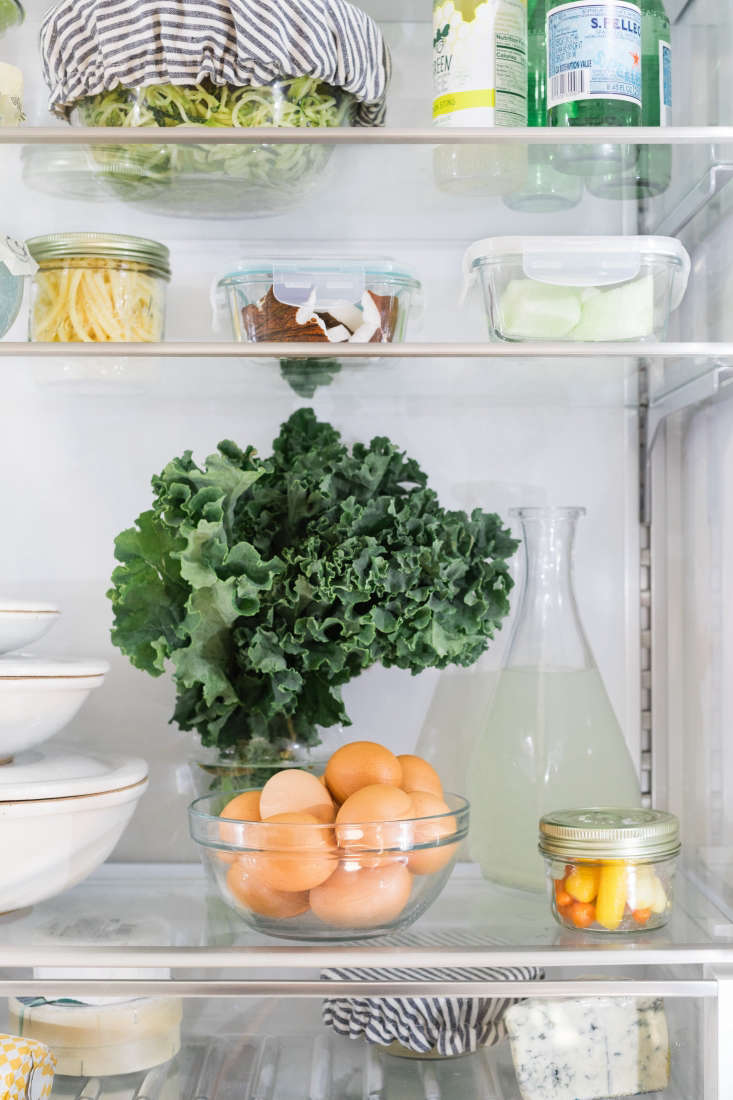
If you’re storing all your fruits and vegetables together in one refrigerator drawer, you’re not doing it right. Yes, there’s a science behind how and where to store your perishable foods and Marta Teegan and Robert Stelzner, owners of Cookbook, a greengrocery in Los Angeles with two locations (in Echo Park and Highland Park), are the perfect experts to help explain some of it. Recently, Alexa asked Marta, a trained chef, master gardener, and author, for her advice on storing and organizing fresh produce, dairy, and meats. Here’s what Marta had to say (for the full story, see: Expert Advice: A Greengrocer’s Guide to Storing Produce and Leftovers).
Fruits: What’s the best way to store them?
For fruits that need to ripen (e.g., bananas, stone fruits, avocados), it’s best to store them at room temperature; place them in a paper bag to speed up the ripening process. Already ripened fruits should be refrigerated, as colder temperatures will stall further ripening. Other fruits, like berries and citrus, should be refrigerated from the get-go. Tip: If there’s a piece of fruit that’s already begun to spoil in the bunch, don’t store it in the same place as the others; it’s producing more ethylene than the others and will encourage the others to rot, too. And, by the way, that’s also the reason not to store your apples, pears, and other ethylene-producing fruits with your greens, which are ethylene-sensitive.
High inventory turnover at grocery stores means Marta and Robert are able to keep most fruits unrefrigerated at Cookbook. “We like to keep most, if not all, of our fruit at room temperature, but right now we have limes and yuzu in the refrigerator. We keep our dates in the refrigerator year round; it keeps them from fermenting,” Marta says.
Vegetables: Should they be kept in paper or plastic bags?
“Mushrooms are best stored in paper bags, and unripe bananas are best ripened in paper bags. Leafy greens and lettuces, however, don’t do well in paper,” Marta says. “For heartier greens like kale, collards, and chard, I’ll put as many bundles as will comfortably fit into a single plastic bag—they do not each need their own bag. I store lettuces and other delicate greens in plastic but with lots of air in it to protect the greens from being squashed and getting slimy.”
As for the question of whether to refrigerate vegetables? “The only veggies that we keep at room temperature are potatoes, onions, garlic, and winter squashes. All other vegetables are stored in the refrigerator. Mushrooms and ginger can go either way,” says Marta, who also has some advice on how to revive wilted produce: “For anything that’s been left out for too long and wilted, simply snip their ends and submerge them in water for 15 minutes to revive them before storing in the refrigerator. Herbs being used the same day or the next day can be stored in a glass jar of water, but if the herbs are left in water for too long this will definitely wash out the flavor of the herbs.”

Eggs: Do they need to be refrigerated?
“If buying room temperature eggs from a farmer, it’s fine to keep them at room temperature. If buying already refrigerated eggs, it’s best to then also store them in the refrigerator,” advises Marta. This is because a refrigerated egg left on the counter can sweat, which encourages bacteria growth.
Meats: What’s the best way to wrap them for the freezer?
“Unless the package is damaged, it’s best to keep meat in its original packaging from the store,” Marta says. “Store it on the lower level of the refrigerator, in a spot where it can’t drip on anything should it leak. If you plan to freeze raw meat, it’s best to wrap it tightly in plastic if it is not already in a plastic package. I also like to note the date that it’s going into the freezer on a piece of blue tape.”
Find more good reads on proper food storage here:






Have a Question or Comment About This Post?